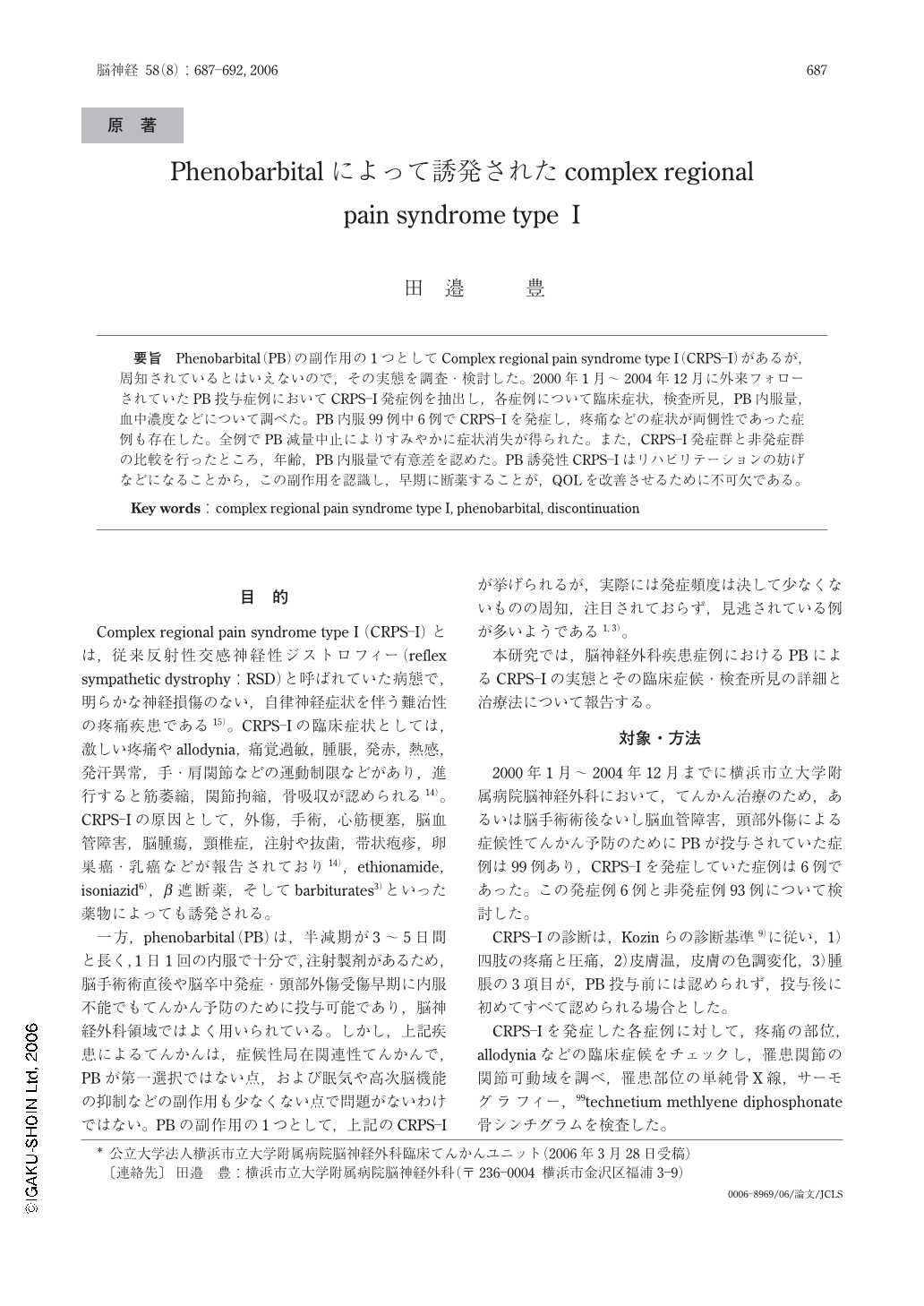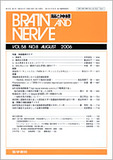Japanese
English
- 有料閲覧
- Abstract 文献概要
- 1ページ目 Look Inside
- 参考文献 Reference
要旨 Phenobarbital(PB)の副作用の1つとしてComplex regional pain syndrome type I(CRPS-I)があるが,周知されているとはいえないので,その実態を調査・検討した。2000年1月~2004年12月に外来フォローされていたPB投与症例においてCRPS-I発症例を抽出し,各症例について臨床症状,検査所見,PB内服量,血中濃度などについて調べた。PB内服99例中6例でCRPS-Iを発症し,疼痛などの症状が両側性であった症例も存在した。全例でPB減量中止によりすみやかに症状消失が得られた。また,CRPS-I発症群と非発症群の比較を行ったところ,年齢,PB内服量で有意差を認めた。PB誘発性CRPS-Iはリハビリテーションの妨げなどになることから,この副作用を認識し,早期に断薬することが,QOLを改善させるために不可欠である。
Complex regional pain syndrome type I (CRPS-I) requires the presence of regional pain and sensory changes associated with findings such as abnormal skin color, temperature change, sudomotor activity, or edema, following a noxious event. Complex regional pain syndrome type I induced by phenobarbital (PB) is not well known, although several reports have strengthened the association between PB and CRPS-I. I reviewed the charts of 99 patients treated with PB to assess the incidence, clinical characteristics, investigations, dosage and plasma concentration of PB, and risk factors in the development of CRPS-I. Six patients developed CRPS-I. Pain was severe and allodynia, swelling, discoloration, sweating were present in all patients. This syndrome manifested bilaterally in some patients. Affected patients included 5 men and 1 woman between the ages of 52 and 78 (average 64.2 years). A radiograph showed demineralization in one patient. Thermography showed temperature differences between affected and unaffected limbs, although in a few patients the differences were little because of bilateral affected limbs.99Technetium methlyene diphosphonate bone scan showed increased periarticular changes in most of the patients. The patients developed CRPS-I at 9.7 weeks (average) after PB was begun. The average time was 7.5 months between CRPS-I and PB reduction. Neither sympathetic ganglion blockade nor physical therapy was effective. Treatment of CRPS-I consists of PB reduction and prednisone and/or Neurotropin(R). In all patients clinical symptoms and signs such as pain and edema, and range of motion of their shoulders were improved after PB discontinuation. One patient was followed longitudinally, documenting improvement following discontinuation, reexacerbation with PB rechallenge, and remission once more when PB were discontinued. The higher incidence should depend on the coexistence of separate risk factors such as age and PB dosage. Recognition of CRPS-I induced PB,early diagnosis, and withdrawal of PB are important for symptomatic relief and improvement of QOL.

Copyright © 2006, Igaku-Shoin Ltd. All rights reserved.


